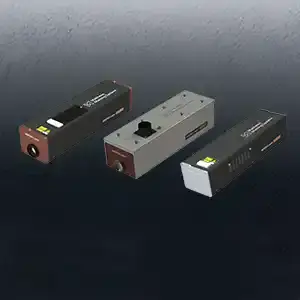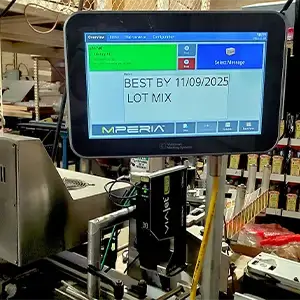How to choose between laser and inkjet for your marking needs
In the world of consumer-packaged goods, choosing the right marking technology for marking and coding is crucial for efficiency, quality, and cost-effectiveness. Among the various options available, laser and inkjet technologies stand out for their unique advantages and suitability for many different applications. This post delves into when you should opt for laser marking and vice versa, helping you make an informed decision for your product and packaging needs.
Laser Marking Technology
Advantages:
- Permanence and Durability: Laser marking provides permanent marks that are resistant to abrasion, chemicals, and environmental factors. This is essential for products that require long-lasting traceability and branding.
- High Precision: Both fiber and CO2 lasers can produce high-resolution marks, making them ideal for detailed graphics, barcodes, and fine text.
- Clean and Eco-Friendly: Laser marking machines do not require inks or solvents, reducing consumable costs and environmental impact.
- Low Maintenance: With fewer moving parts and no consumables, lasers have lower maintenance requirements and operational costs.
When to Use Laser Marking:
- Permanent Marking Needs: If your applications require marks that endure the realities of supply chain movement and reality of retail environments, laser marking is the best choice.
- High-Resolution Codes: For detailed 2D codes, such as QR or data matrix codes, and crystal-clear alphanumeric sequences, lasers provide the precision needed for crisp, readable marks every time.
- Harsh Environments: When marked items are exposed to extreme conditions or harsh handling, laser marks ensure that the information remains intact and legible.
- Clean Operations: In food, pharmaceutical, and other industries where cleanliness is paramount, laser marking offers a contaminant-free solution.

CO2 lasers deliver eco-friendly operation along with precise, durable marks.
Inkjet Marking Technology
Advantages:
- Versatility: Inkjet printers can mark on a wide variety of surfaces, including porous and non-porous materials, making them highly versatile.
- Speed and Flexibility: Inkjet technology is suitable for high-speed production lines and can quickly adapt to changing print requirements, such as different codes or graphics.
- Cost-Effective for Short Runs: For short production runs or variable data printing, inkjet printers offer a cost-effective solution with minimal setup time.
- High-Quality Prints: Modern inkjet printers deliver high-quality, sharp prints suitable for both small and large characters, barcodes, and graphics.
When to Use Inkjet Marking:
- High-Speed Production: In fast-paced manufacturing environments, inkjet printers can keep up with high-speed production lines, ensuring continuous and efficient operation.
- Variable Data: For applications requiring frequent changes in printed information, such as different batch codes or promotional messages, inkjet printers offer quick and easy adjustments.
- Surface Versatility: If you need to mark on diverse materials like paper, cardboard, plastics, or metals, inkjet technology provides the flexibility needed for various substrates, and is available with food-grade inks.
- Cost Sensitivity: For applications where initial investment and operational costs are critical, inkjet printers offer an economical solution, especially for small to medium production volumes.

Thermal inkjet printers such as the Matthews L-Series, shown here in a turnkey VIApack configuration, are ideal when you need versatility to handle a broad range of substrates.
Choosing between laser and inkjet marking technology depends on your specific application requirements, including the substrate, production environment, and budget considerations.
Opt for Laser Marking if:
- Your applications require permanent, durable marks and production demands 99.9% uptime
- High-resolution and precision are critical
- You aim to reduce consumable costs and environmental impact
- Your production environment demands cleanliness and low maintenance
Opt for Inkjet Marking if:
- You need flexibility in marking on various surfaces
- High-speed production and variable data printing are essential
- Cost-effectiveness for short runs or frequent changes is a priority
- High-quality, versatile prints are required
Both laser and inkjet technologies have their place in the world of marking and coding. By understanding the strengths and applications of each, you can select the technology that best meets your needs, ensuring efficient, high-quality marking for your products.
Unsure how to proceed? Fill out the simple form below to schedule a consultation with one of our experts in your area for a deeper dive.
